OUR STUDENTS COPE WITH COVID-19
Among our current students are the shining stars of tomorrow’s global research scene. Disrupted by the insidious pandemic, their training period was transformed. How did the pandemic change their research project and their learning, and in doing so, how did it reveal their character? Four young next-generation researchers tell their COVID-19 stories.
Like a rollercoaster
From her sun-filled apartment, Stephanie Coronado-Montoya has the lilting voice of someone who has beaten the pandemic gloom through determination and discipline. A daunting task, according to this doctoral student who has been working in the laboratory of Dr. Didier Jutras-Aswad (Neuroscience research theme) since January 2019.
For this young woman, pregnant with her first child in April 2020, the health crisis forced her to juggle with the stress and emotions related to her pregnancy and COVID‑19, while sharpening her coping skills.
To deal with isolation—her family lives in Miami—and fatigue, routine became the best pathway to normalcy. “Working at home just as I was doing when I was at the Research Centre, disciplining myself by setting objectives and deadlines, helped me stay motivated,” she said.
Even though her studies progressed more slowly on the whole, one of her projects was implemented nationally. This online survey concerns a risk-reduction intervention for young adults with psychosis who use cannabis. In normal circumstances this population is hard to reach, but thanks to a smart phone application, they were able to benefit from the intervention developed by Stephanie and her colleagues.
“With the pandemic, the number of conferences and webinars available online exploded. Since I had more time to devote to them, I was able to learn more in my area of expertise and related subjects. It’s an excellent thing and I plan to make it part of my schedule after the pandemic!”
The health crisis reminded her of the importance of always promoting science, properly understanding it and informing people in her circle with reliable data.
She sees a bright future ahead. “Being able to look a person in the eyes rather than through a computer screen would be a good start!”
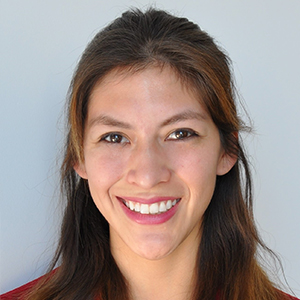
Stephanie Coronado-Montoya
Hope and more hope
In Marie-Claude Bourgeois-Daigneault’s laboratory (Cancer research theme), Karen Geoffroy could almost be considered one of the senior researchers. But it’s all relative. This doctoral student began working in the laboratory in September 2019, only two months after it opened. The dynamic researcher sums up her COVID‑19 experience in one word: ADAPTATION.
Even though she had to switch to full-time remote work overnight, she didn’t waste a minute of her time away from the lab bench. She updated her knowledge of cancer and oncolytic viruses, her specialty, processed experimental data collected before the pandemic and co-authored a literature review with her mentor.
“I also took advantage of the time to virtually defend my doctoral thesis in pharmacy in France at the end of May 2020. Two days later, the Research Centre reopened its labs and allowed us to resume our projects. Pandemic or not, our lab continued to be very active. Cancer doesn’t take a break.”
There’s no doubt that the forced suspension of activities impacted the progress on her doctorate and the extent to which she could network at conferences, so essential at this phase of one’s scientific career. However, it did not prevent her from appreciating how quickly the research teams mobilized in the fight against COVID‑19, as well as their solidarity and willingness to share knowledge in a sector that is usually so competitive.
Isolated from her family in France, she took the time to reconnect with friends and relatives she hadn’t talked to for a long time, and for no particular reason. “After all, despite the pandemic, there’s still the human side of life.”
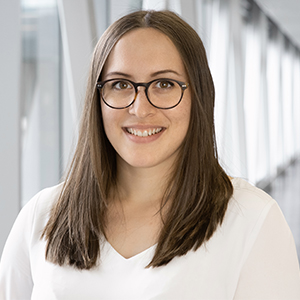
Karen Geoffroy
Rare enthusiasm
To say that Guillaume Beaudoin-Bussières, a doctoral student on Andrés Finzi’s team (Immunopathology research theme), spent time in the laboratory last year is an understatement. Used to working on HIV since 2018, he decided to redirect his research efforts towards COVID‑19. The transition was hectic, but he coped with it well.
“For a young researcher, this new scientific context is exciting. A stroke of luck in the midst of misfortune, in a way. With the coronavirus, I witnessed live the production of knowledge disseminated by the international research community. And I also participated in it with my team. Compared to HIV, you know nothing about this new virus. You’re starting from zero. It’s an immense task,” he explained.
Focused on the work to do, he gradually took on more responsibilities at the laboratory, in addition to more stress, given the public health stakes. He also wrote scientific articles, which he had never done before. “During the pandemic, I realized that I was able to do a lot more than I thought I could. I felt I had matured a bit!”
In his opinion, things moved faster during this exceptional period, but thoroughness was still of utmost importance, from project approval times to administrative procedures. Knowledge sharing among teams was also accomplished more simply.
Beaudoin-Bussières sees the positive side of this experience. “I had several articles on COVID‑19 published that had an impact, because they were topical. I also believe that the pandemic helped promote our profession among the public at large and give visibility to basic research. Maybe this will help us get funding in the future.”
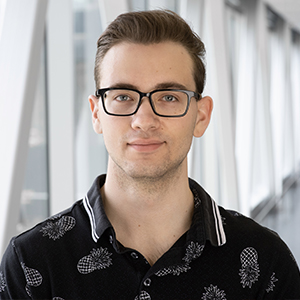
Guillaume Beaudoin-Bussières
Time to reconnect with the world
Deborah Villafranca-Baughman is a born optimist. With a smile, she seems able to chase away the clouds of the pandemic, no matter how big they are. A doctoral student in Adriana Di Polo’s (Neuroscience research theme) laboratory, this young researcher from Barcelona, Spain, has been working at the CHUM Research Centre since 2016.
For her, the pandemic revealed, and even exacerbated, social inequalities. “When activities at the Centre were put on hold, I took advantage of the time to volunteer at a CHLSD, working with seniors. I noticed a wonderful sense of solidarity among the volunteers and I found it gratifying to see the hope in the eyes of the lonely people that we were taking care of,” she said.
Living far from her family and not being able to be with them physically to support them during times of bereavement or illness was sometimes difficult, but she used time as a remedy for weariness. Time to find herself, to read what is being done in her area of expertise and to live in the moment.
Time to reconnect with people, too. “Every noon, I connected online with my family for an hour of ‘Gym-finement’. Being dynamic in my personal and professional routines also helped stimulate my mind to be more effective in my work, to discover what I want and to set goals accordingly.”
Once the Research Centre reopened, she was able to get back to the laboratory and immerse herself once again in an area of research that fascinates her. Since then, her mantra has been: take nothing for granted.
The future holds many possibilities for Villafranca-Baughman—going as far as she can with her neuroscience research, having her own laboratory or business, continuing her humanitarian activities. “Opportunities will arise, but you just have to be there when life gives them to you.”
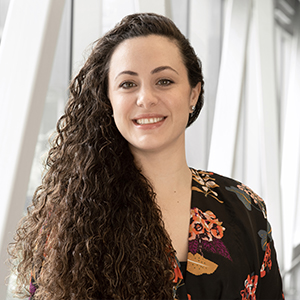
Deborah Villafranca-Baughman
The pandemic started to resemble the film Groundhog Day for Ciaran Murphy-Royal, a regular researcher in the Cardiometabolic research theme. Having arrived at the Research Centre in June 2020 from Calgary, it was inevitable—he had to devote a good deal of his energy to starting up his laboratory. Day after day, a routine to follow.
For this important step, he was able to count on the valuable help of his team: a master’s and a doctoral student, two people that he had to keep an eye on more than usual, given the health context.
“Even though they’ve been rather isolated from their families in Alberta and Switzerland, they’re managing to get through it pretty well. For sure, I was more attentive to what they were experiencing and I learned to be more patient. To help them stay motivated during this uncertain period, I remained positive and set specific goals and deadlines for them. The idea behind this is that setting up a laboratory is a collective effort, so by working together, we’ll succeed,” he explained.
For his part, Ciaran Murphy-Royal, an independent researcher just starting his career, reminded us that he himself has been able to count on the support of more experienced colleagues such as Thierry Alquier, Stephanie Fulton and Gareth Lim. Handing over the baton from one generation of scientists to the next seems to be working well.
Nor did the researcher hesitate to give his students free time to review their exams while he took care of the laboratory experiments. This was a way of giving them moral support during these difficult times.
“These days, the whole fun part of working in a laboratory is reduced to a minimum for our students: no conferences, no networking, no meetings in the cafeteria. It’s temporary, so I frequently remind them that better times are coming.”
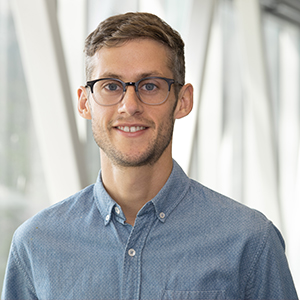
Ciaran Murphy-Royal

Ciaran Murphy-Royal
La pandémie a un peu pris l’allure du film éponyme pour Ciaran Murphy-Royal, chercheur régulier de l’axe Cardiométabolique. Arrivé au Centre de recherche en juin 2020 depuis Calgary, c’était inévitable : il devait concentrer une grande partie de ses efforts au démarrage de son laboratoire. Jour après jour, une routine à observer.
Dans cette étape importante, il a pu compter sur l’aide précieuse de son équipe : une étudiante en maîtrise et un doctorant. Deux personnes sur lesquelles il a dû veiller un peu plus que d’habitude étant donné le contexte sanitaire.
« Même s’ils ont été assez isolés de leurs familles en Alberta ou en Suisse, ils s’en sortent plutôt bien. C’est sûr que j’ai été plus attentif à ce qu’ils vivaient et j’ai appris à être plus patient. Pour qu’ils restent motivés pendant cette période incertaine, je suis resté positif et leur ai fixé des objectifs et des échéanciers précis. L’idée derrière tout ça? Mettre en route le labo est un effort collectif et, ensemble, nous allons y arriver », explique-t-il.
De son côté, Ciaran Murphy-Royal, chercheur indépendant en début de carrière, rappelle qu’il a pu lui-même compter sur le soutien de collègues plus expérimentés comme Thierry Alquier, Stephanie Fulton ou Gareth Lim. Le passage de témoins entre générations de scientifiques opère bien, semble-t-il.
Le chercheur n’a pas hésité non plus à laisser à ses étudiants du temps libre pour réviser leurs examens pendant que lui s’occupait des expérimentations en laboratoire. Une façon de les soutenir moralement dans ces moments délicats.
« Tout l’aspect “fun” de travailler au labo est actuellement réduit au minimum pour nos étudiants : pas de conférences, pas de réseautage, pas de rassemblement à la cafétéria. C’est temporaire alors je ne manque pas de leur rappeler que des temps meilleurs s’en viennent. »


